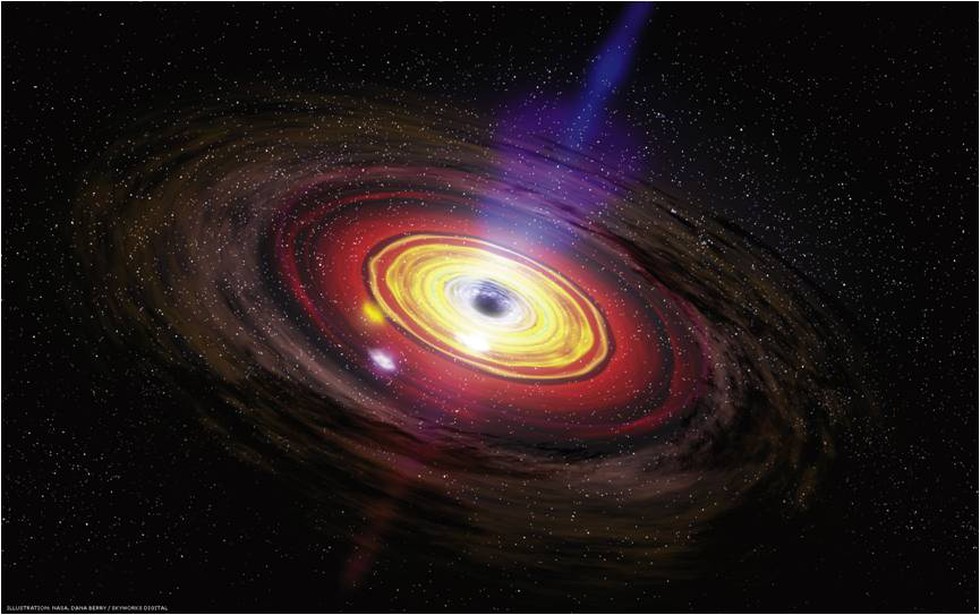Researchers from the Indian Institute of Astrophysics (IIA) have made a groundbreaking discovery regarding the interaction between a radio jet emitted from Active Galactic Nuclei (AGN) and the surrounding interstellar medium. This finding marks the first detection of such an interaction in a dwarf galaxy located approximately 14 million light years from Earth.
What is a Radio Jet?
A radio jet is a stream of material ejected from the center of certain galaxies at nearly the speed of light. These jets emit strong radio waves, which can be observed by astronomers.
Challenging Existing Hypotheses
The Department of Science and Technology has highlighted that this discovery challenges the prevailing hypothesis. It was previously believed that only large and massive galaxy jets that regulate star formation could host AGN powered by massive black holes.
Data Collection
The IIA researchers combined data from various wavebands, ranging from radio to X-ray, from the galaxy NGC 4395. They observed evidence of interaction on a scale of 10 parsecs (about 30 light years) around the black hole at the center of this dwarf galaxy.
Insights from the Lead Researcher
Payel Nandi, the lead author and a Ph.D. student at IIA, stated, “We decided to investigate how the radio jet from a small black hole interacts with the gas in a dwarf galaxy called NGC 4395.”
Observational Techniques
The research team utilized data from multiple telescopes, including:
- Chandra for X-ray data
- Gemini-North and Hubble Space Telescope for optical data
- Gemini-North for infrared observations
- ALMA for submillimeter observations
- Very Large Array for radio observations
They also incorporated data from the UltraViolet Imaging Telescope (UVIT) on board AstroSat, India’s first dedicated space observatory. This comprehensive approach allowed them to discover a unique radio structure resembling a bipolar jet, centered around the black hole.
Conclusion
This study not only sheds light on the interaction between radio jets and the interstellar medium but also opens new avenues for understanding the role of AGNs in smaller galaxies.
Multiple Choice Questions (MCQs):
- What is the primary focus of the research conducted by the Indian Institute of Astrophysics?
- A) Interaction between stars and planets
- B) Interaction between radio jets and interstellar medium
- C) Black hole formation in massive galaxies
- D) Detection of exoplanets
- Answer: B) Interaction between radio jets and interstellar medium
- What is a radio jet?
- A) A type of galaxy
- B) A stream of material emitted from a black hole
- C) A structure formed by collapsing stars
- D) A planetary formation
- Answer: B) A stream of material emitted from a black hole
- How far is the dwarf galaxy NGC 4395 from Earth?
- A) 10 million light years
- B) 14 million light years
- C) 30 million light years
- D) 50 million light years
- Answer: B) 14 million light years
- Which telescope was NOT mentioned as part of the research team’s data collection?
- A) Chandra
- B) Hubble Space Telescope
- C) James Webb Space Telescope
- D) Very Large Array
- Answer: C) James Webb Space Telescope
- What unique structure did the researchers discover around the black hole in NGC 4395?
- A) A massive cloud of gas
- B) A spiral galaxy
- C) A bipolar jet
- D) A ring of stars
- Answer: C) A bipolar jet
